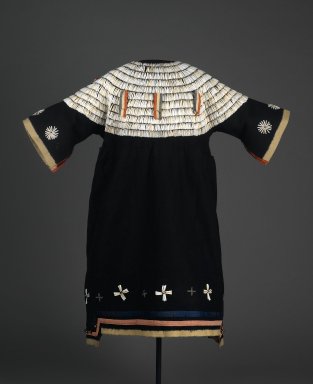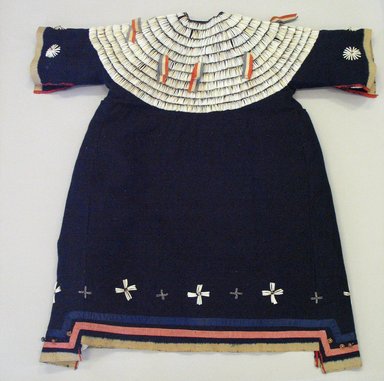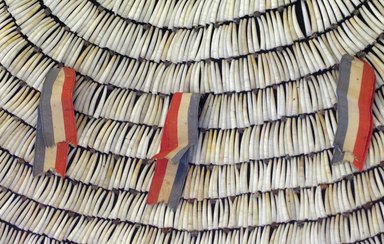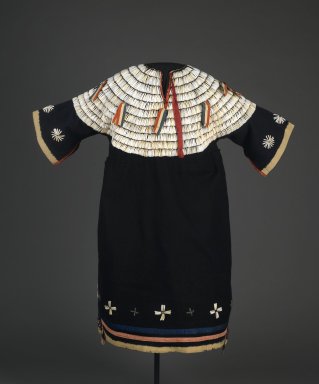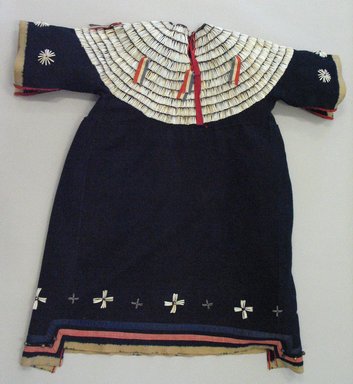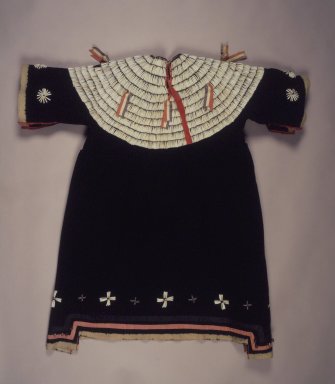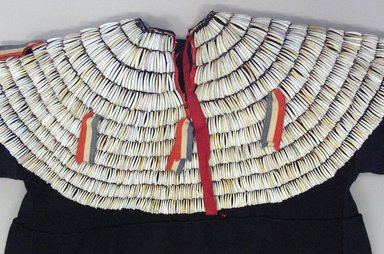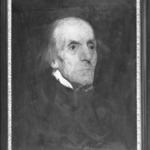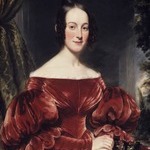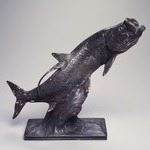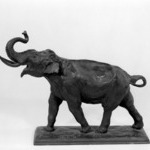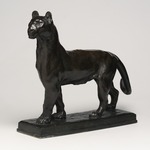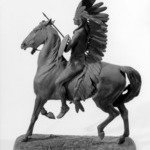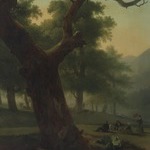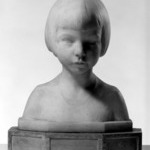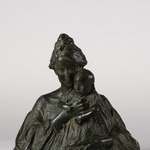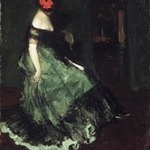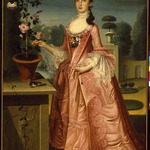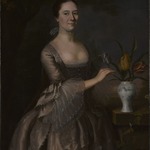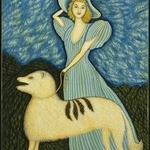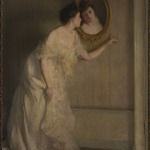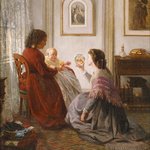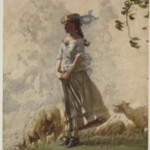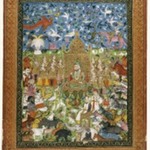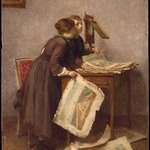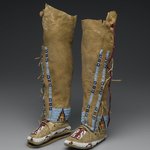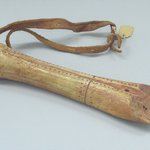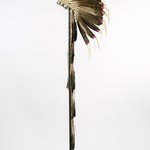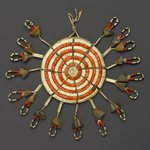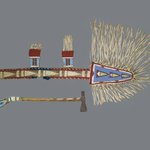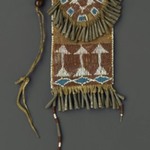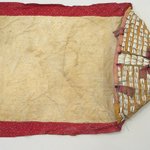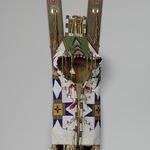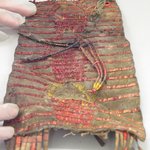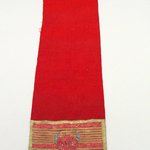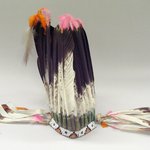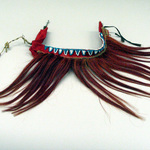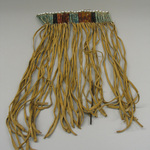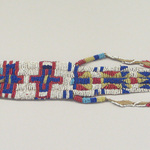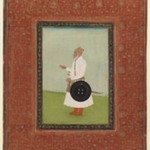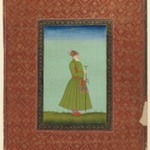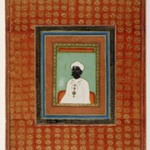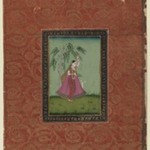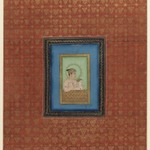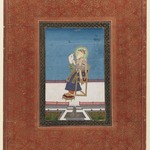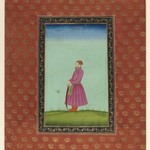Dress
Arts of the Americas
During the early reservation period (1860–91), when Native people were forced onto reservations, the buffalo nearly became extinct due to wholesale slaughter by the United States government. European woolen trade cloth quickly replaced hide that was no longer available for garments. The blue cloth was dyed with indigo, and Native women often retained the undyed selvage as part of a garment’s design, as seen on the sleeves and hem of this dress. Wool cloth was easier to cut, sew, and maintain than hide, and thus became a valuable commodity. The dress’s rich blue color is enhanced by the rows of white dentalium shells on the bodice.
MEDIUM
Wool cloth, dentalium shells, ribbon, glass beads, brass bells, cotton
DATES
1875–1900
ACCESSION NUMBER
46.96.12
CREDIT LINE
Charles Stewart Smith Memorial Fund
CATALOGUE DESCRIPTION
Dark blue wool cloth dress with a long bodice (collar) of dentalium shells in a pre- Reservation style decoration because these shells were hard to obtain. The Sioux would have traded for them. This would be for a special woman and handed down in families. The very heavy dress does not look reworked and was worn very little and probably only used for special occasions. Blue wool trade cloth, red, white, blue ribbons might indicate July 4th reference. A slit is at the back of the dress and the basic pattern is T-shaped. Four-direction designs on the bottom would be prestige decoration and the little flowers along the bottom are unusual, odd. The bells are different colors. The body of the dress is machine sewn.
MUSEUM LOCATION
This item is not on view
CAPTION
Possibly Sioux. Dress, 1875–1900. Wool cloth, dentalium shells, ribbon, glass beads, brass bells, cotton, 43 5/16 x 33 7/16in. (110 x 85cm). Brooklyn Museum, Charles Stewart Smith Memorial Fund, 46.96.12. Creative Commons-BY (Photo: Brooklyn Museum, 46.96.12_front_PS2.jpg)
IMAGE
front, 46.96.12_front_PS2.jpg. Brooklyn Museum photograph, 2009
"CUR" at the beginning of an image file name means that the image was created by a curatorial staff member. These study images may be digital point-and-shoot photographs, when we don\'t yet have high-quality studio photography, or they may be scans of older negatives, slides, or photographic prints, providing historical documentation of the object.
RIGHTS STATEMENT
Creative Commons-BY
You may download and use Brooklyn Museum images of this three-dimensional work in accordance with a
Creative Commons license. Fair use, as understood under the United States Copyright Act, may also apply.
Please include caption information from this page and credit the Brooklyn Museum. If you need a high resolution file, please fill out our online
application form (charges apply).
For further information about copyright, we recommend resources at the
United States Library of Congress,
Cornell University,
Copyright and Cultural Institutions: Guidelines for U.S. Libraries, Archives, and Museums, and
Copyright Watch.
For more information about the Museum's rights project, including how rights types are assigned, please see our
blog posts on copyright.
If you have any information regarding this work and rights to it, please contact
copyright@brooklynmuseum.org.
RECORD COMPLETENESS
Not every record you will find here is complete. More information is available for some works than for others, and some entries have been updated more recently. Records are frequently reviewed and revised, and
we welcome any additional information you might have.
